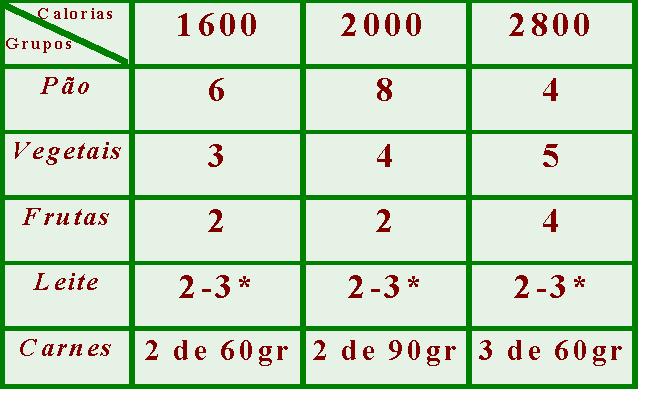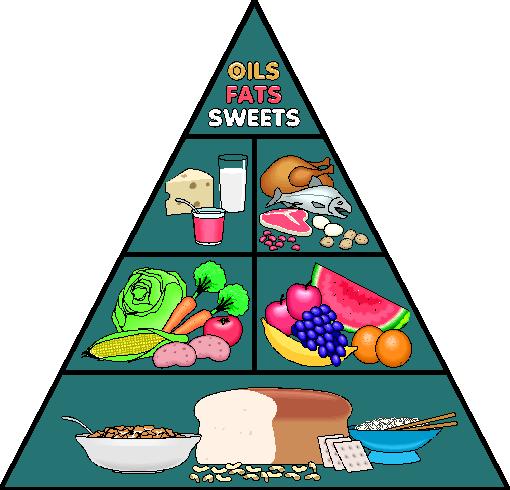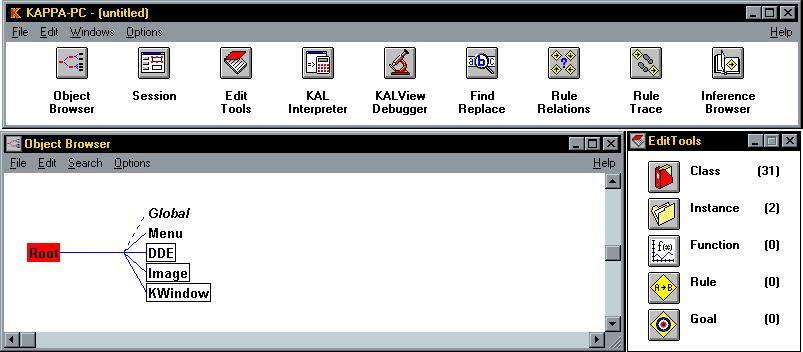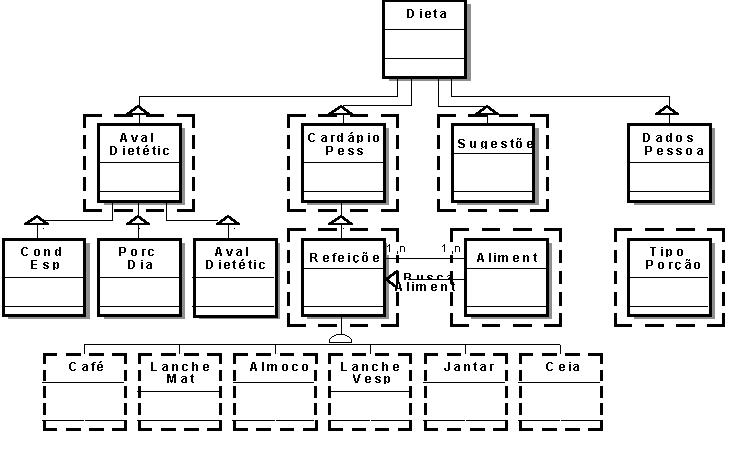New Technology Poster Session
| INABIS '98 Home Page | Your Session | Symposia & Poster Sessions | Plenary Sessions | Exhibitors' Foyer | Personal Itinerary | New Search |
Introduction
* The first rule aims at the reach of the quantity of daily calories necessary to the person for the accomplishment of his/her activities, according to the tabel below, for example.
 click to enlarge
click to enlarge
* The second rule aims at the attribution of the obtained calories in form ofportions for each group of the Nutriment Pyramid.
* The third one is related to the subdivision of the daily total portions in every meal that the personwishes to consume, respecting the balance between the nutritional groups of the Nutritional Pyramid. After having the exact portions of each nutritional group for every meal, it is determined which meal the nutriments will be part of, according to the person's some nutritional preferences, and also his/her metabolic needs.The Inference Engine
The Knowledge Basis rules are discharged by an inference motor where a selection of facts and rules is done through a chaining forward-which is represented in the Kappa-PC by Forward Chain-which, through the premises- the personal characteristics of the person-will get to the conclusions-what the person needs to eat well, respecting his/her habits, likes and needs.
The Work Memory
When the Infrence mechanism is executed, it constantly activates the work memory, where there are the results during the processes. It's in the work memory that the conclusion of a rule is stored, and consequently the premise of the next rule is located and so on.
I the first collection of rules, the system inference is started through the symbol Sexo, which is located in the work memory(named in the Kappa-PC like Agenda). It's done a search on the symbol Height and through these two symbols, the rule that calculates the ideal weight is brought into action, and this result will act as a premise to the next rule , and so on until the last rule of the collection, which will determine the daily calories necessary to the person.
Materials and Methods
 click to enlarge
click to enlarge
The system has been developed in the shell Kappa-PC, following a model Oriented to Objects.
 click to enlarge
Fig. 3: Shell Kappa-PC .
click to enlarge
Fig. 3: Shell Kappa-PC .
 click to enlarge
Fig. 4: System's Analysis.
click to enlarge
Fig. 4: System's Analysis.
The studies of the adaptation of the fact presented on the this paper, for the focus of Expert Systems, is noticed due to the utilization of the Expert Knowledge-that is, the strict attendance of professionals in the Nutrition area, to solve problems appropriate to those professionals.
For the development of the meals, the philosophy of the Food Guide Pyramid is used, whose graphic interface reflectes, in a simple and objective way, important nutritional concepts like variety, proportion and moderation. That Food Guide Pyramid has been translated and adapted to some Brazilian habits, such as the consume of manioc meal, beans and rice during the meals.The system structure is characterized in the following way:
-Main Interface of the System: It allows the navigation in the modules of Help, System maintenance(where it allows the Nutriment manipulation, registering according to the company it will apply to), Specific researches, Diet calculation and information about the Pyramid Guide.
-Interfaces if Collect of the User's general data: It aims the collect of personal and general data, and data of physiological importance(like age, weight, height, classification of the physical activity, pregnancy,etc.), which will be used for the calculation of ideal weight and quantity of necessary calories to reach the objective(gain, maintenance or loss of weight) and the caloric necessity of each person.-Interfaces of the manipulation and adequation of the suggested nutritional menu: Once how many calories one needs are determined, the system automatically distributes the portions for each nutritional group of the pyramid, necessary to that number of calories.
The next step is the interaction with the user for nutritional adjustments. While the menu is set up, the system analyzes it interacting with notices, which include:
- The combinations between nutritional groups(so there won't be repetition of Groups in the same meal);
- The nutriments of the restriction group(so as to avoid the use of nutriments rich in fat or sugar);
- The daily caloric total(in order to make the user adapt to his/her calories and necessities);
- Some dietetic orientation(adequate to the correct number of daily meals).
These interfaces will deal with this part, that is, it will be questioned how many and which meals the user wishes to consume, what kind of food is disliked, etc. Then the system comes up with the most adequate solution.
Results
During all the process of data collect to the result of the system, interfaces are used, as to the questions so to the answers of the system. It depends only on each user to follow or not the menu and the nutritional orientations suggested by the system.
| Discussion Board | Previous Page | Your Poster Session |